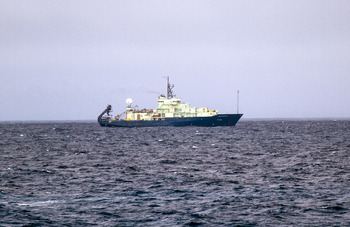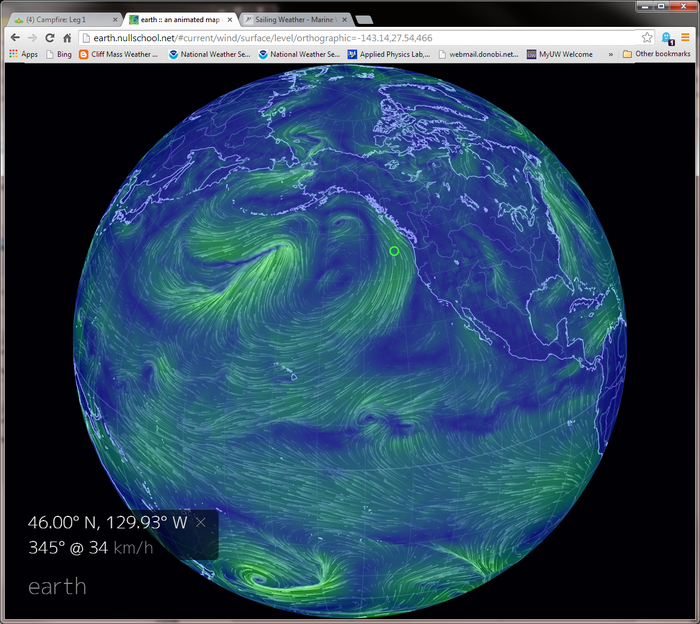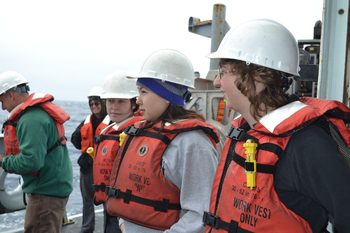
Our sister ship, the R/V Atlantis, working 1.5- to 3-km away from us at the summit of Axia Seamount during the first week of VISIONS'14. The Atlantis effort is focusing on the ASHES hydrothermal field, where we installed an underwater high-definition camera and 3D temperature array last year. Photo Credit: Ed McNichol, Mumbian Enterprises, Inc., V14
Yesterday's Dive (R1712) went very well: we completed all of our tasks. The ROV ROPOS came on deck at 2115h. In preparation for the next dive at PN3A at the base of Axial Volcano, a junction box was moved to the ROV working platform, and a cable drum was readied for installation of a ~ 1 km extension cable at Axial Base. Once gear was safely secured on deck, the Thompson transited about 25 km to the southeast to begin work at the Axial Base Site.
Yesterday, the wind shifted from westerly to northerly and increased from ~12-16 kts to 22-27 kts over the evening and into the early morning. Wind waves increased from ~3’ to 5-6’ during that time. Our dive at Axial Base will include taking a heavy junction box down to the seafloor, such that we need calmer seas to dive. Our sister ship the R/V Atlantis working on the summit of Axial in the ASHES hydrothermal field is also hove to today. The forecast is for the wind to decrease over the next few days. The image shown above is from the http://earth.nullschool.net/ site that provides beautiful animations of global ocean conditions.
Even though we are hove to, there is always work to do when at sea on a research ship. We are currently conducting water sampling with a rosette and CTD hosting 24 bottles that close at various depths and trap water inside for follow-on chemical and biological analyses. The CTD casts are being done at the base of the volcano (PN3A Axial Base) where we will be installing two ~ 9000 ft tall instrumented moorings during follow-on VISIONS'14 legs. As we take water samples now we are also collecting data on fluid properties in real-time with sensors mounted on the CTD during the cast (e.g., salinity, oxygen, temperature, density, particle concentration). These data will provide important information concerning local variability of these parameters and on the environmental conditions to expect when we install the moorings.



